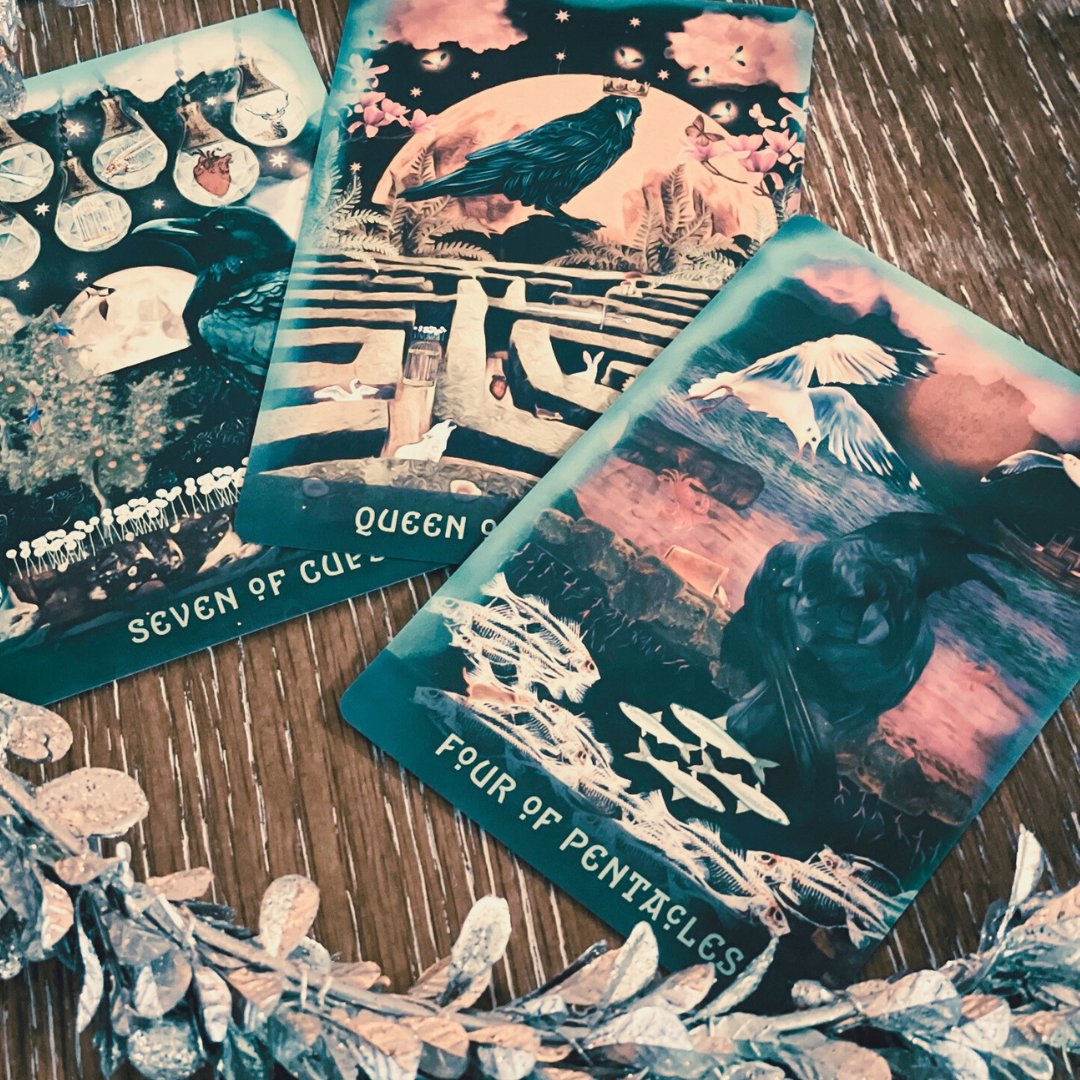
Old Tarot Beliefs that May Hold You Back from Utilizing the Powerful Tool
Share
Tarot has always been a fascinating subject, from its mysterious origins to its current use in personal and spiritual growth. The growing interest in tarot has also given rise to various myths and misconceptions. From novices feeling overwhelmed by 'right' and 'wrong' ways to use the cards to those who've faced skepticism about their tarot interests, many outdated beliefs are circulating. This post aims to dispel such myths.
Common Tarot Myths Debunked
Myth 1: Tarot is only for predicting the future.
While tarot can give insights into potential outcomes, its primary strength is clarifying current circumstances, challenges, and energies around you. The tarot helps you uncover blocks or thoughts that hold you back and is an excellent tool for seeing situations from another perspective.
Sorry, it won't tell you this week's winning lottery numbers or when your soul mate will knock on your door. It can shed light on blocks you construct that may keep that soul mate from knocking, though!
Myth 2: You need to be psychic to read tarot cards.
No, no, no! You don't have to be psychic. Tarot is more about intuition, understanding symbolism, and making connections. Your higher self/spirit guides know you better than any psychic; you just need to learn how to tap into that information, which takes practice.
Here is a fun little exercise to bring you closer to your higher self.
List five things you would like to see during the day. Pick items that you may not see normally. For instance, a goldfish, a paper airplane, 2 dollar bill, a baby, and a cupcake with blue frosting. During the day, pay attention and see how many items on your list appear. They may appear differently than you expect. For example, the goldfish may be in a drawing or even the street name, or the paper airplane could be someone's logo. Do this exercise every day for a week. You may notice at first nothing on your list appears, but by the end of the week, you will be surprised at how many items appear.
Myth 3: Tarot cards are tied to dark forces or negative energies.
Tarot, like any tool, reflects the intentions of its user. Just as a hammer can build a house or destroy it, you get what you put in from the tarot. Approach it with respect and positive intent, and it will serve as a force for good. That is not to say that the tarot will not show us the truth because it does, and sometimes that truth is brutal to acknowledge, but the tarot does so to help us face realities that impede our progress so that we can grow and move forward.
Myth 4: Only a gifted few can understand and use tarot.
While some might have a natural affinity for reading tarot, anyone can learn and benefit from its wisdom with dedication and practice. It all begins with your intuition and feeling that connection with the energy within the deck. You can use any deck to start your tarot journey. The most important thing is to find one that resonates with you!
Can You Give Yourself a Tarot Reading?
Absolutely! Giving yourself a tarot reading can be an insightful experience. It's a way to tap into your intuition and seek answers from within. Like journaling or meditation, self-readings can be a personal growth tool. I find treating each personal reading as an appointment with my guides helps me get into the right frame of mind for using the tarot.
Is It Okay to Buy Yourself a Deck?
There's an old superstition that a tarot deck should be a gift. However, in modern times, many practitioners believe buying your deck is entirely okay. In fact, choosing a deck that resonates with you can enhance your connection to the cards. Having a deck that "clicks" is way more important than receiving one as a gift!
Are There Good Cards and Bad Cards?
Tarot embodies the full spectrum of human experience, so labeling cards as 'good' or 'bad' is limiting. For instance, while "The Tower" might initially seem negative, signifying upheaval, it can also mean necessary change and breaking free from old patterns. Although it can be challenging to take a "zen-like" approach when a spread is riddled with the Three of Swords, Ten of Swords, The Tower, etc. - the key to understanding the vital message the cards are offering is to remember there is no good or bad; there just is. Putting the idea of good or bad aside helps us see the cards objectively and enables us to find the solution to the trouble.
Tips for New Tarot Users
- Be open-minded. Let go of old myths and see tarot for the enlightening tool it can be. You pave your path as it is unique to you!
- Seek education. There are many contemporary resources available, from books to online courses. You will also find a slew of different information as we all have our ways of doing things. If you discover someone's approach resonates with you, use it! Your journey is personal, and how you receive the information from your deck is up to you.
- Practice regularly. The more you connect with your deck, the more intuitive your readings become. Familiarize yourself with your deck. Get to know the cards, the artwork, and the feel of energy, as every deck possesses a different energy. The tarot can become a good friend, but just like any relationship, it takes time.
As you embark on your tarot journey, remember to trust your intuition, be open to learning, and, most importantly, enjoy the process!

1 comment
I absolutely love your art work. I can’t wait to get one of your crow tarrot decks.
I recently received your The Liminal Forest Oracle & I got big compliment from my mom. Just wanted to share! Well worth the wait!! Thank you!!!